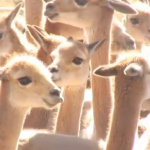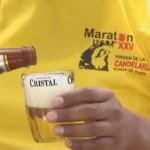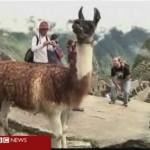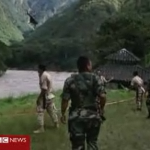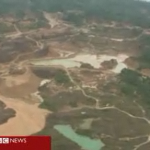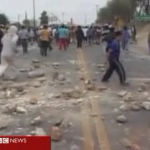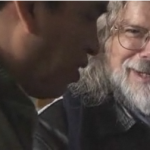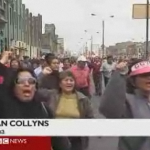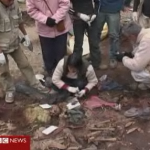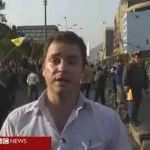The Chaccu is a yearly round-up of wild vicunas, the national animal of Peru.
Small and slender relatives of the llama, vicunas are endangered and prized for their wool.
Because they are wild, a rope more than a mile long is used by Andean villagers to surround the animals and herd them into a corral to be sheared.
And as Dan Collyns finds out, the Chaccu is a sacred ritual which is hundreds of years old.
Read MoreIn an ongoing series, BBC News focuses on aspects of life in countries and cities around the world. What may seem ordinary and familiar to the people who live there, can be surprising to those who do not.
Having a drink with friends is part of Peruvian culture – and there are very specific rules about the way that beer is shared.
Dan Collyns joins a group of football-playing friends as they enjoy a post-match drink – and tries to get to grips with a very old tradition.
Peru’s most famous archaeological site, Machu Picchu, has formally reopened after heavy rains and landslides cut rail access to the site, forcing it to close for two months.
Hundreds of tourists, including US actress Susan Sarandon, took the train to the 15th Century Inca ruin – the most-visited site in Latin America.
Peru had lost some $200m (£131m) in revenue because of the closure.
Police in Peru say they have airlifted the last of the tourists stranded near the Inca ruins of Machu Picchu after floods destroyed road and rail links.
Nearly 1,300 travellers were flown out by helicopters on Friday, a local policeman told the Associated Press.
A total of nearly 4,000 tourists and local residents have now left the area following last Sunday’s heavy flooding.
In the heart of Peru’s rainforest, the pursuit of gold is pushing one of the world’s most biodiverse ecosystems to the brink of catastrophe.
Peru is the world’s sixth producer of the precious metal – but officials say almost a quarter of it is illegally mined.
See the video report on the BBC.
Read MorePeople in the southern Peruvian towns of Chincha and Pisco have marked the second anniversary of an earthquake which killed more than 500 inhabitants and destroyed thousands of homes.
Two years on, and there is anger among some residents that only 25% of the planned reconstruction has taken place in Pisco.
Read MoreSince 1970, Peru has been hit by five powerful and deadly earthquakes. The latest struck Peru’s coast exactly two years ago with a magnitude of 8.0 on the Richter scale.
It fiercely shook the capital Lima, but its devastating epicentre was about 200km (124 miles) to the south, near the town of Pisco, a small fishing port built largely of adobe – mud bricks which Peruvians have used for thousands of years.
More than 500 people were killed and about 75,000 homes were left uninhabitable.
For Peruvian engineer Marcial Blondet, it was the devastating quake in 1970 that first motivated him to develop earthquake-resistant buildings, particularly for those who could least afford them.
Some 70,000 people died in the mountainous region of Huaraz, many of them in an avalanche of snow, ice and rock which obliterated the town of Yungay. It was the deadliest earthquake in Latin American history.
See the full article and video on the BBC
Read MoreThousands of Peruvians have demonstrated against their government’s economic policies as part of a nationwide three-day strike.
The protests follow clashes in the north of the country which left at least 33 people dead.
Forensic investigators in Peru say they have recovered the remains of at least 70 people from a mass grave.
They are all victims of a 1984 massacre in Putis, Ayacucho and the excavation is believed to be the largest-ever in Peru.
Riot police in the Peruvian capital, Lima, have used tear gas to disperse protestors marching in support of indigenous groups.
The demonstrators were calling on Congress to revoke two laws which they claim threatens their lands.
Read More